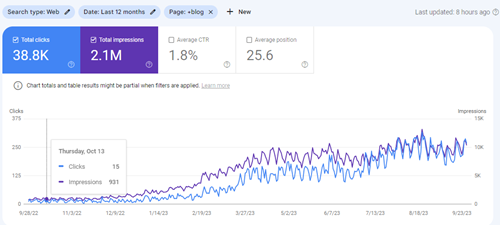
How A Digital Marketing Funnel Works
Learn how to develop a comprehensive digital marketing strategy using top of the funnel, middle of the funnel, and bottom of the funnel tactics. …
While it seems like a simple construct, SMART Goals are often overlooked as a tool when creating marketing plans. Most people think they create strong goals for themselves. In reality, we often miss an element or opportunity to fine-tune our goals by not following a tried-and-true method like the SMART goal-setting method.
Businesses have settled for substandard goals for too long. It’s time for a refresher on what SMART Goals are, how to set SMART Goals, and how to use them to plan for success in 2024.
It’s hard to be smart about your goals if you don’t know what SMART means. Let's start with the basics by reviewing what SMART stands for before we start setting goals. Derived from the acronym, SMART goals encompass five key characteristics:

Once you understand the basic framework, you can create goals of your own. As part of the goal-setting process, ask yourself each of these questions:
Go through these and only proceed to the next question if you can determine a reasonable answer to each. Once you’ve answered each question, transform your findings into a definitive statement.
For most people, the first question they ask is “Why Do I Need SMART Goals?” It's easy to think that while simple, they are overrated or too hard to define accurately but SMART Goals offer more than just a framework of thought. They give focus to your efforts form a holistic and focused perspective. They help you measure your progress over the course of time in a meaningful way. It’s easy to forget the mindset and challenges of a few months ago and lose sight of the original focus. SMART Goals create a single goal for your entire team to work towards resulting in greater cohesion and alignment. And lastly, they help prove return on investment, which is the end goal of all marketing efforts.
The second concern from most marketers is “What happens if I don’t hit my goals?” “By setting a goal I might not reach, am I setting myself and my team up for additional scrutiny and negative attention?” These fears, while understandable, are combatted by outlining the benefits of how SMART goals counteract those concerns.
SMART Goals focus your analysis for future improvements. They provide insights into how close, or far, you were from meeting your hypothesized goal allowing for slow improvements and iterations. Finally, they open the floor for an honest conversation on how to meet your next goal. It's easy to lay blame and look for excuses but by agreeing to a goal as a team, it allows for honesty to take center stage and force reflection on how to improve going forward.

Smart goals come in all shapes and sizes. Each company is unique and has its own goals and challenges to overcome. While each company is unique, there are three main SMART Goal frameworks we suggest using to help you create your own goals.
Example Goal: Over the next six months, we will post two blogs a month One on the first week and one on the third week.
Consistency metrics allow you to set a goal focused on producing work on a steady basis and developing a sustainable process. By focusing on the production of work, such as content, you will learn how to develop an attainable process and eliminate variables. Eliminating inconsistency in your data will allow you to set accurate and more KPIs focused goals in the future. Think of a consistency goal as a strong foundation for SMART Goal setting.
Example Goal: Over the next quarter, we want our Google Ads Click Through Rate (CTR) and Conversion Rate (CVR) for XYZ Service Campaign to meet or exceed the industry benchmarks of 5% CTR and 1% CVR.
Numerical goals take your goal-setting capabilities one step further. Industry benchmark data, such as benchmark data for Google Search Ads, are a great way to start setting numerical goals. To successfully set a numerical goal though, you must have mastered your consistency metrics first. By setting this type of goal, you will learn how budgets affect impressions and conversions, how seasonality plays a role in your annual marketing, and how to remain competitive in your industry.
Example Goal: In the next six months, we want to increase our marketing-qualified leads for Service XYZ from an average of five per month to 10 per month by leveraging an overall increase in digital marketing tactics of social, paid, content, and SEO.
Tailored Numerical Goals are the final advanced level of SMART Goal setting. To set a successful Tailored Numerical Goal, you must have mastered the basics of consistency, be eyeing your industry benchmarks and averages to outcompete your competition, and have a strong understanding of how each part of your marketing efforts support your larger revenue goals as an organization. By reaching this level, you can learn how to tie marketing goals to company revenue and sales goals, see how tactic “levers,” or scaling specific tactics up or down, result in the greatest improvement, and learn how budget and time translate to increased lead quality and closure.
As we look towards the end of 2023 and into planning for next year, we encourage everyone to use the SMART Goal framework to try something new or scale up a current tactic. Allow this framework to help you think through a process you have been struggling with or determine what ROI an increase could bring!
We hope this inspires you to think big in the new year. If you need expert advice or help solving tough problems, let us know!